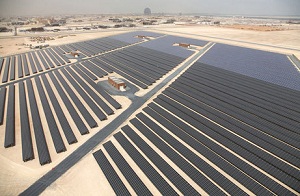Secretary Salazar and BLM identify public lands prime for solar
 When United States Secretary of the Interior Ken Salazar announced on Thursday that his organization in conjunction with the Bureau of Land Management and Department of Energy had identified 1,000 square miles of public land prime for utility-scale solar development in six western states, it was huge news for the solar industry.
When United States Secretary of the Interior Ken Salazar announced on Thursday that his organization in conjunction with the Bureau of Land Management and Department of Energy had identified 1,000 square miles of public land prime for utility-scale solar development in six western states, it was huge news for the solar industry.
“Now we are going to have a process for getting solar projects approved,” said Monique Hanis, spokeswoman for Solar Energy Industries Association. “This is really shifting our government process.”
Hanis noted that the government approved the first eight utility-scale solar projects on public lands just this year. That’s especially significant because the government has approved more than 74,000 permits for oil and natural gas exploration on public lands over the last two decades.
The Department of the Interior’s release of its Draft Solar Pragmatic Environmental Impact Statement today, indicates a sea change, Hanis said. It’s placing an importance on renewable energy that has historically been reserved for fossil fuel development.
“This really sets up the opportunity for solar energy development to have a more predictable path,” she said. “In the past, each project was getting looked at as if for the first time. This will allow the industry to develop basic guidelines and a streamlined process.”
The draft does recommend that these pre-identified public lands come with a package of incentives to entice private companies to develop large-scale solar projects on the land.
The public lands identified for potential fast tracking in the draft are located in Colorado, California, Arizona, Nevada, Utah and New Mexico.
“This proposal lays out the next phase of President Obama’s strategy for rapid and responsible development of renewable energy on America’s public lands,” Salazar said in a press release. “This analysis will help renewable energy companies and federal agencies focus development on areas of our public lands that are best suited for large-scale solar development. Our early, ‘Smart from the Start,’ planning will help us site solar projects in the right places, and reduce conflicts and delays at later stages of the development process.”
The draft was released to the public today complete with maps and detailed information about the areas and why they were selected.
The draft’s release is followed by a 90-day public comment period. People are encouraged to send their comments in writing at: www.solareis.anl.gov. There will be 14 meetings in areas most likely to be impacted by the draft designed to take public comment.
Image courtesy of Envirmena.



